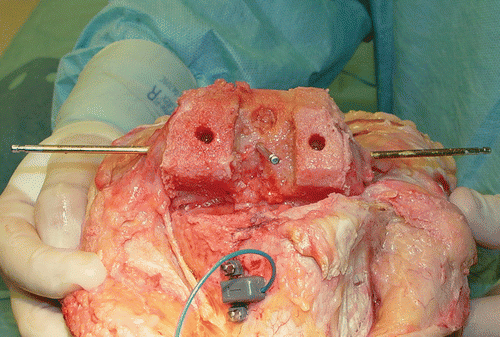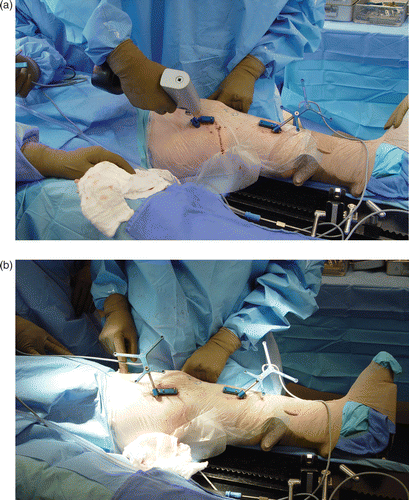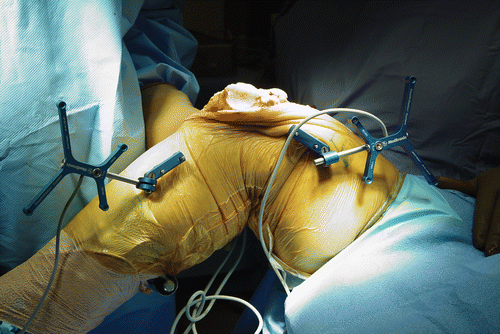Figures & data
Figure 1. Anatomical specimen demonstrating pins placed medial and lateral in the transepicondylar axis, with a midline pin approximating the “femoral center” landmark which is referenced for the Medtronic StealthStation Treon system. Note the position of the intramedullary rod placement and that all bone cuts, including the femoral notch cut, are not interfered with by this pin placement.

Figure 2. (a) Intraoperative placement of the transepicondylar pins requires dissection of the medial synovial reflection to palpate the medial epicondyle and the supracondylar ridge just cephalad to this point. Pin insertion then parallels the transepicondylar axis and is perpendicular to the AP axis of Whiteside. (b) The femoral array is positioned in the medial side of the lower extremity.

